Research to Practice, Practice to Research
Creating a Preschool Computational-Thinking Learning Blueprint to Guide the Development of Learning Resources for Young Children
Connected Science Learning April–June 2020 (Volume 2, Issue 2)
By Heather Lavigne, Ashley Lewis Presser, Deborah Rosenfeld, Marisa Wolsky, and Jessica Andrews
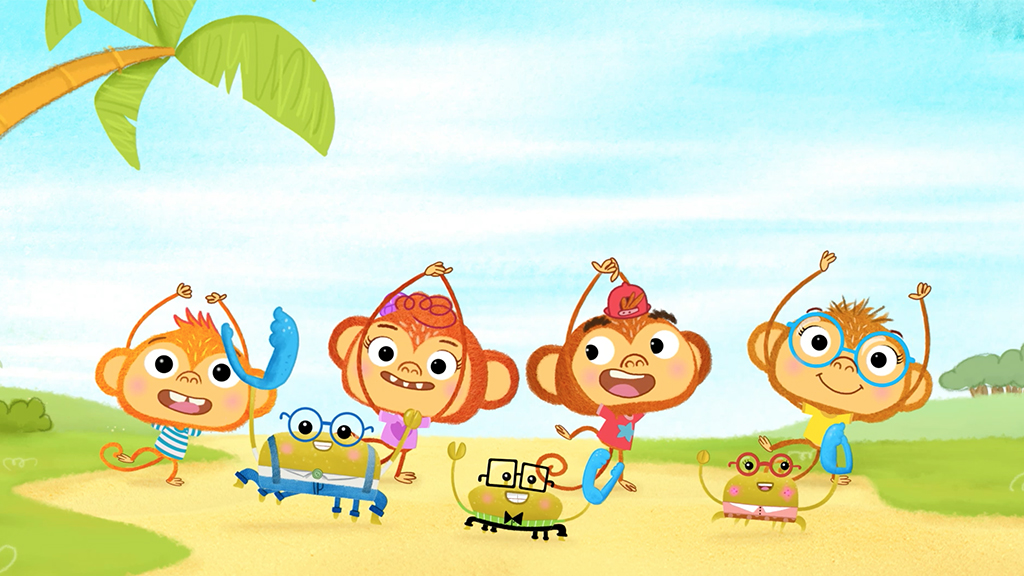
As our world increasingly requires its citizens to be able to solve complex problems, the set of skills, knowledge, and competencies that people need to be successful is changing in response. In recent years, one important set of critical skills has come to be known as computational thinking (CT; Sykora 2014). But despite growing consensus around its importance, a universally accepted definition of CT has yet to emerge (for a review in how CT is often defined, see Cansu and Cansu 2019). According to Wing’s (2006) transformative article, “computational thinking involves solving problems, designing systems, and understanding human behavior, by drawing on the concepts fundamental to computer science” (p. 33). Some believe that for problems to be computational, a digital device needs to be involved. Wing proposes, however, that CT is a domain-general approach to problem-solving that can be leveraged by humans with or without the use of a computer. Grover and Pea (2018) draw the parallel that computer science is thinking like a computer, whereas CT is thinking like a computer scientist.
We define CT as a creative way of thinking that empowers individuals to be systematic problem-solvers, enabling them to identify problems, then brainstorm and generate step-by-step solutions that can be communicated and followed by computers or humans. With our definition, computers are not required for one to think computationally, and thus CT is distinct from computer science and coding. In fact, it is our belief that learning to think computationally prepares students for any number of complex problems that they may or may not need digital devices to solve.
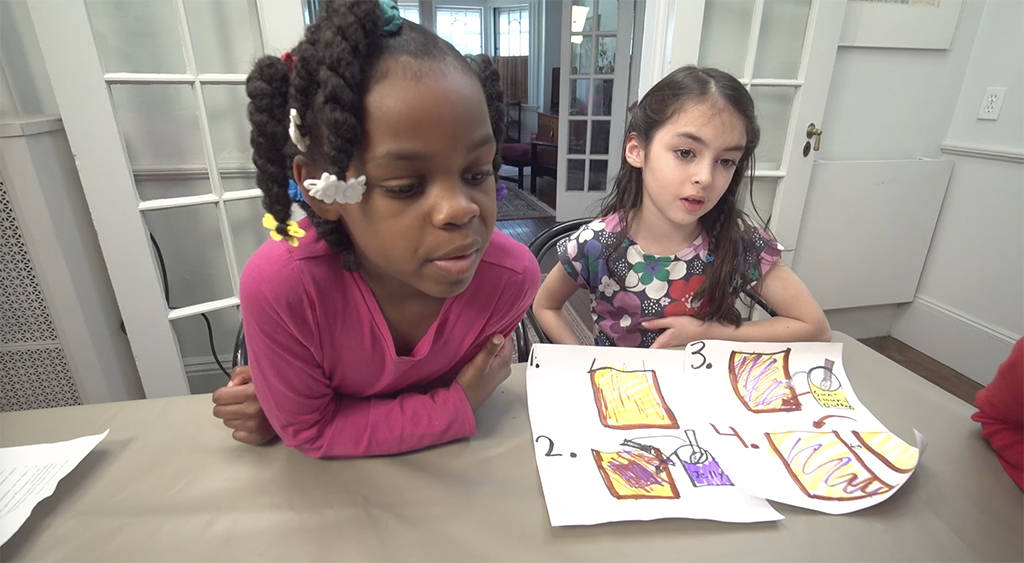
For those of us working to support our youngest learners, we ask: When is the appropriate time to focus on preparatory CT skills? Research suggests that, during children’s early formative years, certain types of experiences, including exploration, exposure to basic skills, skill rehearsal, and practice with rich communication, among others, are critical to support typical development (Ramey and Ramey 1999). Exposure to these experiences cultivates school readiness, which in turn supports children’s later achievement. We believe the same holds true for CT: Exposing children to different kinds of CT-oriented problem-solving ideas and strategies, paired with thoughtful scaffolds and guidance, will allow preschool-aged children to practice CT over a wide variety of contexts. In turn, we believe that this experience will promote the use of CT-based strategies, along with a flexible mindset, when children approach complex problems later in life.
The field is still working on how to introduce CT as a developmentally appropriate practice for young children, including defining some of the CT skills that can be used by young children. To address this need, our team of researchers and media developers partnered to define the scope of what should be taught to young children and provide evidence-based research on effective strategies for bringing CT to a preschool audience. To inform all aspects of the project, we first collaborated on the development of a learning blueprint, which drew from the literature to identify seven overarching CT core ideas. These core ideas are supported by a set of more specific sublearning goals, along with potential task ideas to assess children’s understanding of the skill, ways to vary a task’s difficulty, and suggestions for additional scaffolding. This blueprint served as the foundational document for the iterative development of educational digital and nondigital CT learning resources for families. Although our research was conducted in low-income, urban communities, the learning resources are intended to meet the education needs of all families with young children. The use of a learning blueprint to develop curricular resources is a research-based practice that is standard in the field of formal education. However, using a learning blueprint to guide the development of multimedia content, particularly in areas of informal learning, is an innovative approach.
In this article, we hope to address three objectives:
- to describe the collaborative process for creating our learning blueprint,
- to share our current work on three of the seven CT core ideas that comprise the learning blueprint, and
- to discuss how the CT core ideas were then translated into digital and nondigital content for use among families and informal educators who work with families.
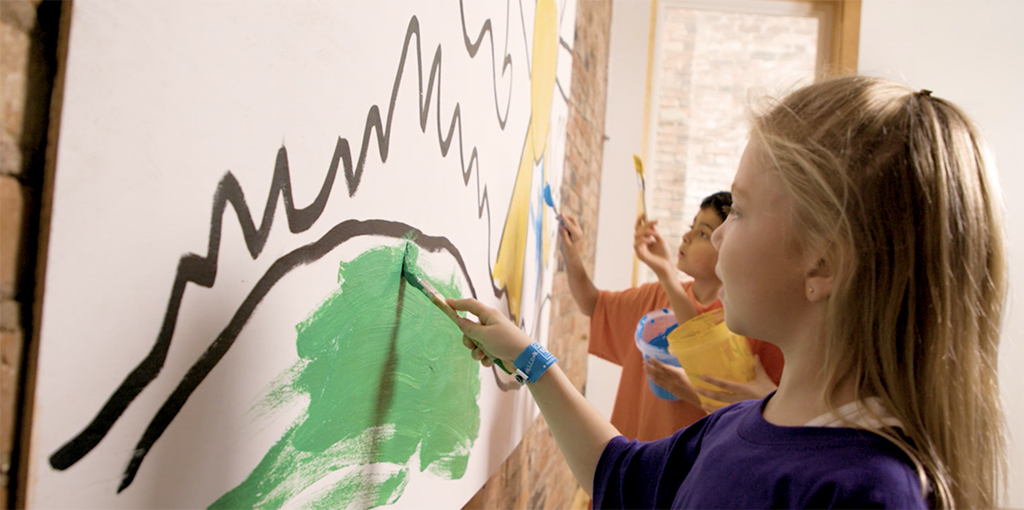
What is a learning blueprint?
A learning blueprint, the roots of which can be found in assessment development literature (Mislevy et al. 2003), is a document that outlines what children should know and be able to do in relation to a particular academic topic. With our research and development project, the blueprint communicated the target outcomes for the project in order to limit the scope of curricular activities to those that directly address the stated learning outcomes. Essentially, the learning blueprint served as a “boundary object,” grounding all development and research activities in an evidence-based curriculum design framework (Vahey et. al. 2018). Thus, the development of the intervention activities was aligned directly to the blueprint’s learning goals.
Throughout our project, our goal was to ensure that all key stakeholders had a meaningful and impactful role in creating a joint-media engagement model that promoted CT exploration among families and children. Stakeholders included
- researchers at EDC,
- media producers at WGBH,
- a panel of advisors,
- a parent advisory board, and
- community partners, including state systems of early education and care and public broadcasters, as well as the BUILD initiative, an organization that works with state systems by providing them with planning, support, technical assistance, and evaluation services.
Because many of these stakeholders directly serve diverse, low-income preschoolers and their families, our work with them was crucial in ensuring that the learning blueprint—and the media resources and assessments derived from it—met the needs of our target audiences. To match this focus, our research work also centered around partnerships with early childhood education and care organizations, particularly those that provide education and services for students and families in need.
In the past, WGBH media projects often included a single formative study that informed the production of resources, followed by a summative study. With this project, we worked in a more iterative and collaborative fashion. Formative data came from a variety of sources and informed multiple iterations of the resources and the learning blueprint. Data were gathered from in-person observations, surveys, and interviews with families. Feedback was gathered from stakeholders through in-person meetings, conference calls, and in writing. We also had a third-party evaluator, who assessed and documented the research and development process. As a result of feedback from key stakeholders and findings from research, the learning blueprint was revised at the end of each formative research phase and again upon completion of the project’s final research study.
The content: Computational thinking with AHA! Island
The goal for the learning blueprint was to inform the content of a set of developmentally appropriate CT learning resources to be used by preschoolers and their families, both in their own homes and in other informal learning environments, such as libraries and community centers. The project through which these goals were realized was AHA! Island, a multimedia program that was designed to teach children how to use CT to solve everyday problems in noncoding contexts (i.e., contexts that do not require a computer). AHA! Island’s media consists of live-action and animated videos hosted by an entertaining cast of characters living in an island community, and related hands-on activities that give parents the background they need to turn everyday situations—such as making a snack—into opportunities to apply CT in the real world. AHA! Island also includes supports for parents and informal educators, specifically those who work in libraries and state systems of early education and care. (Note: Concurrent with this project, the team was also researching and developing CT digital and nondigital learning resources for use by children and educators in the preschool classroom; these resources were also informed by this CT learning blueprint.)
The following section describes the development process for the learning blueprint and how it was translated into entertaining and educational media, with a focus on the CT core ideas of algorithmic thinking, the debugging process, and the design process.
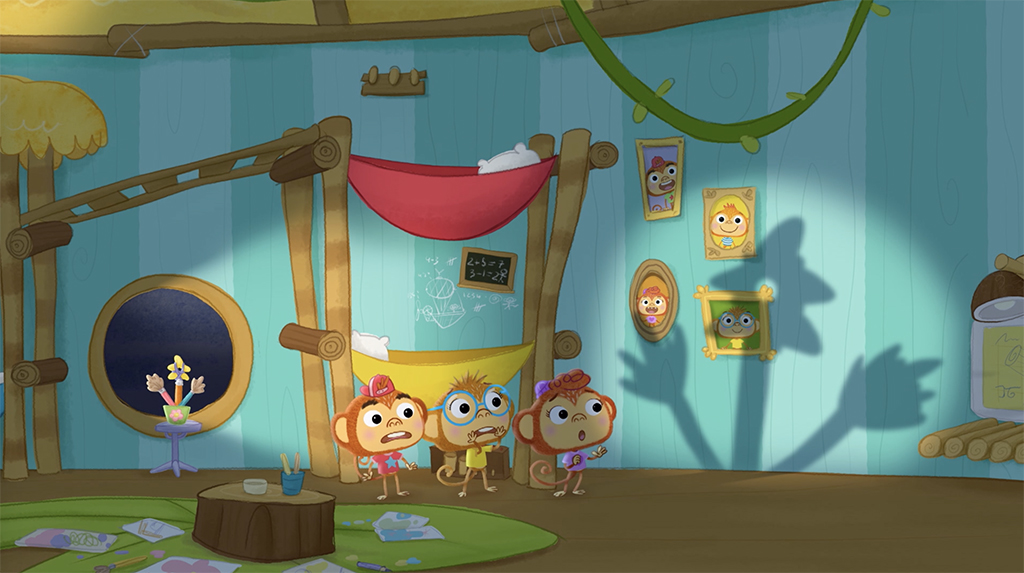
Our development process
The first step in developing a learning blueprint is to clearly articulate a set of learning goals, based on a review of the existing developmental and/or learning research that applies to the content area of interest—in this case, CT for young children. Because engaging young children in CT is a new practice, there was little existing research upon which to base the learning goals. This prompted the research team to draw more broadly from the literature, consulting with adjacent developmental and/or learning research, including literacy, computer science, mathematics, and STEM (science, technology, engineering, and math), to explore what is known about children’s abilities in general and specifically to describe the types of CT activities that might engage and benefit preschool children.
At key points in the development of the learning blueprint, the research team solicited feedback about the content, the way learning goals were organized (particularly whether they lacked clarity), and their potential to generate engaging learning activities and to be represented authentically in children’s everyday experiences. Specifically, feedback was generated through discussions among the research and development teams, teachers, and advisors with expertise in CT, early childhood education, and STEM. Through an iterative revision and review process, this feedback was integrated into subsequent versions of the learning blueprint.
CT core ideas
Over the course of our learning blueprint development process, we identified seven CT core ideas that are developmentally appropriate for young children (see Figure 1). Because the scope of our project was limited, we chose to focus on three of these core ideas for the development of our curricular resources: algorithmic thinking, the debugging process, and the design process. What follows is a brief description of the work that informed the development of the learning goals for these three core ideas. After we describe what is known about children’s abilities in each of these areas, we provide an example of each CT core idea in practice with preschool children.
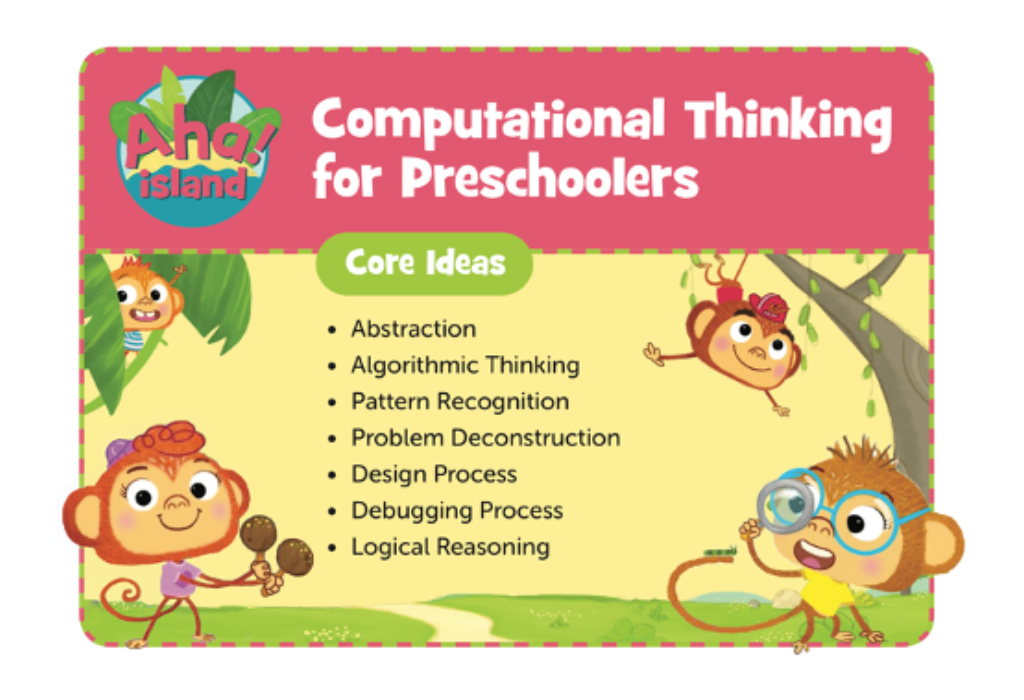
Algorithmic thinking
We define algorithmic thinking as the process of creating a set of ordered steps (sequencing) and then doing them in a particular order to solve a problem or accomplish a task in a way that could be repeated by others (using an algorithm). To use sequencing and algorithmic thinking to solve problems, a child must develop the ability to recognize situations in which order matters, to put things in order, and to reorganize items when they are out of order. Research suggests that preschool children are beginning to understand and develop proficiency with the concept of order. For example, they are beginning to work through situations where order matters versus where it does not (Gelman and Galistel 1978); foundational math research suggests that four- and five-year-olds recognize that objects can be counted in any order to produce the same result (Clements and Sarama 2014). Preschool children are also developing an understanding of the logical ordering of steps—for instance, what happens first in a series of timed events (e.g., waking up before eating breakfast) or what needs to happen before something else can be possible (e.g., making breakfast before eating it). Preschool children are also applying their emerging understanding of sequences in early literacy and math as they follow events in a story and explore ordered numbers and objects (Association for Computing Machinery et al. 2016).
An example of a preschool activity that requires algorithmic thinking is setting the table. With support from adults, children can identify the steps needed to set the table (e.g., count the guests; lay down a tablecloth; gather plates, cups, utensils, and napkins; create a place setting for each person). Adults can also help children see places where order matters (e.g., one should count the number of guests before gathering the plates and cups, the tablecloth should be put down before laying out the plates and cups).
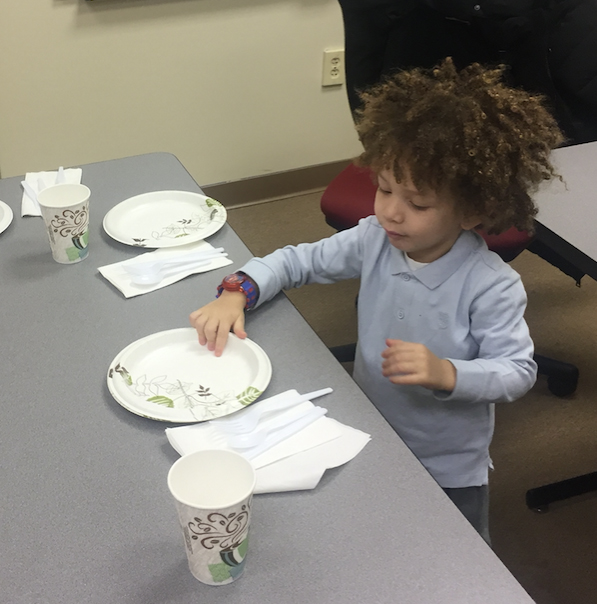
Debugging process
Debugging refers to the process of fixing and improving solutions. When a solution is not working the way it was intended, a debugging process can be used to reflect on what was done and to figure out what changes to make to get a better result. Our approach to a preschool debugging process was greatly informed by the ways in which educators support children’s early engineering practices (e.g., Hoisington and Winokur 2015). Testing and iterating are steps of a simplified debugging process that many children can do even if they cannot explicitly articulate the steps. Children inherently know how to tinker with something to get it to work better, and therefore their iteration is often informal and through the use of trial and error. Being more systematic requires a debugging process that is reiterated and enhanced with practice across numerous design challenges. It can also require support from adults. Having an adult keep track of each step, prompt children with subsequent steps, pause before or after a mistake to help children notice a mistake is coming or has been made, and visually summarize what has been learned will help children engage in a more systematic debugging process.
An example of a simple preschool activity in which a debugging process can be applied is making sound shakers—small containers filled with different objects that make noise when shaken. If a child wants to create a sound shaker that makes a loud noise and finds that it does not make noise at all, they can use a debugging process to:
- reflect on the steps they took to make the shaker,
- think about what they might do differently to get a better result (for example, filling the shaker with something hard rather than something soft),
- try out the idea that they think will work best (for example, filling the container with beans), and
- keep track of what worked and decide whether further improvements are needed.
Design process
In the context of working with young children, we define the design process as the act of making something using a systematic process consisting of three steps:
- creating something new,
- testing it to see how it works, and
- improving it using what is learned from testing.
Much of what our team found about preschoolers’ ability to engage in a design process was also gleaned from existing STEM curricula focused on supporting engineering skills in young children (e.g., Cunningham and Lachapelle 2014). Typical trajectories suggest that children in grades preK–2 are working to develop their skills to generate and/or compare multiple solutions to a problem. In first grade, children ask questions, make observations, and gather information about a situation people want to change that can be solved by developing or improving an object or tool. In second grade, children can analyze data from tests of two objects designed to solve the same design problem, and compare the strengths and weaknesses of how each object performs (evaluating solutions). For each step within the design process, children can be supported by adults, who can prompt them and explicitly note the steps within this process, such as, “What are you trying to figure out or accomplish?” or “What might be a first step in approaching this situation?” When children can articulate the steps of the design process through brainstorming, designing and creating ideas, and testing and evaluating solutions, they can then more easily apply each step. Selecting situations that are familiar to children and lend themselves well to prior experiences and knowledge will help children with this task, whereas novel situations will make this more complicated.
The design process is one that can be applied not just to problems, but to a wide range of creative and generative preschool activities. For example, a child may create a mobile, an expressive work of art that includes pictures or small toys to represent his or her interests and personality, which are attached by strings to a clothes hanger. The child could then work with an adult to test it by placing the hanger on a doorknob to see whether it balances evenly. Upon reflection, the child could improve the mobile by adding or subtracting objects or moving them around to achieve better balance.
Across all three of our CT core ideas (algorithmic thinking, the debugging process, the design process), we expect adults to play an important role in organizing children’s practice. Children typically require adult support to abstract, generalize, and transfer knowledge across situations. With the CT core ideas, particularly with their ability to abstract information, we expect that adults will almost always need to support preschool children, such as by asking guiding questions, modeling an approach for identifying key details, and helping children apply their skills to new problems. As such, our learning goals assume that young children would be receiving scaffolding and support from adults during their learning explorations.
CT learning goals for algorithmic thinking, debugging process, and design process
As a result of the literature review, our researchers also compiled a set of CT learning goals, along with a set of more specific sublearning goals, for each of the three focal CT core ideas (see Table 1).
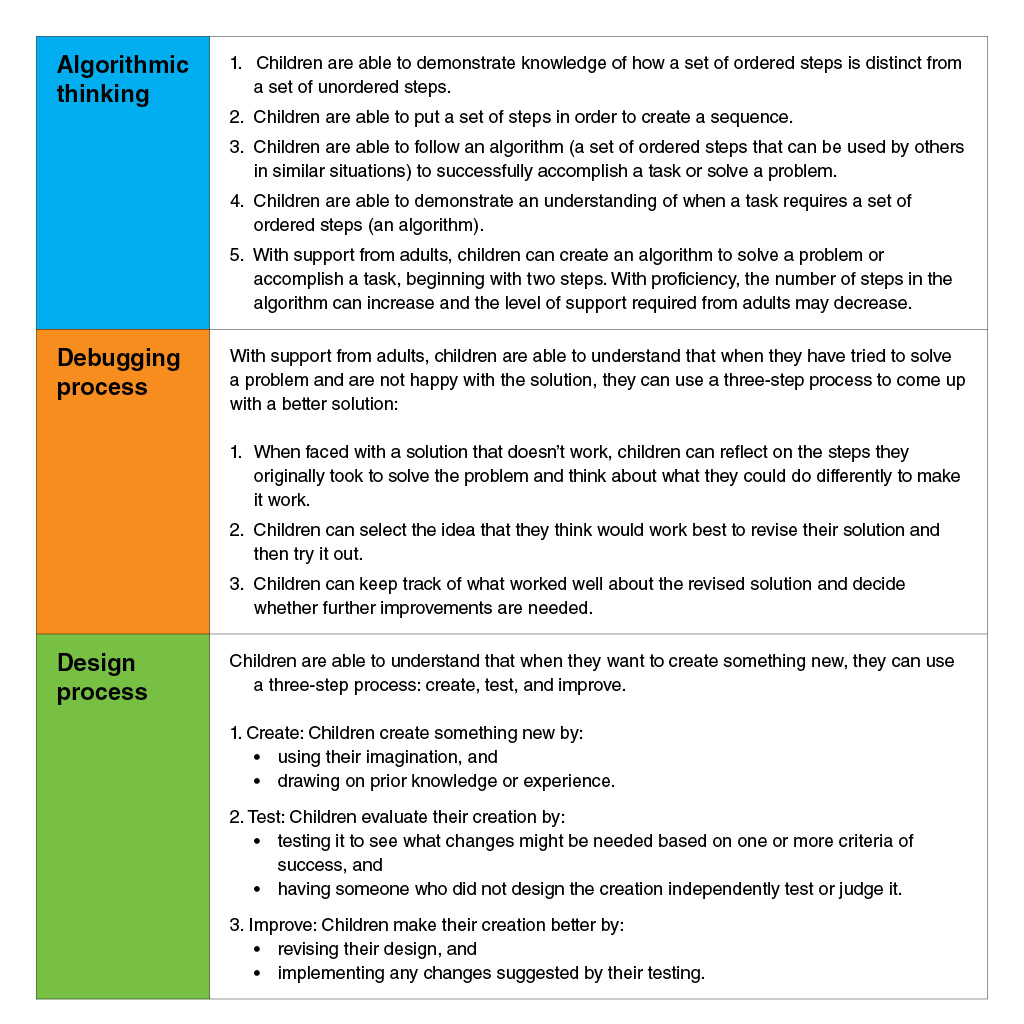
Using the blueprint to inform content development
As mentioned above, the learning blueprint served as the foundational document for the development of AHA! Island, a media project that capitalizes on the power of appealing characters and relatable storylines to teach CT concepts to preschoolers through joint parent/child media engagement. The media is centered around an entertaining family of monkeys and their beloved grandmother, along with their animal neighbors. Siblings Maisie, Daisy, Bo and Fred apply CT in the service of solving preschool relatable problems, such as building a home for a stuffed elephant, sequencing a dance pattern, and cleaning their room.
The first step in our resource development process was to take the learning blueprint and make it accessible for writers, producers, and activity developers. The time it took to translate the learning blueprint—a document that could be seen as daunting and difficult to interpret—into something easy for developers to operationalize was a crucial investment. For example, the original blueprint described an early step in the process of problem decomposition as: “Children are aware that complex problems are made up of multiple components and that, once simplified, each component could be examined independently.” We translated this into simpler language for our writers’ document, and added an example relevant to the lives of preschoolers. This explanation became: “When you have a big problem, you can break it into smaller parts that are easier to solve. For example: If you have a messy room, you can think about what is making it messy: Your toys are out of place, your clothes are all over the floor, and there are crumbs on the rug.” This work of translating academic language into layperson’s language proved so helpful to our development team that we eventually incorporated some of this simplified language into the final learning blueprint.
With the blueprint in hand, we then worked with writers and our animation studio to bring the learning goals to life through drafts of scripts, animated videos, and hands-on activities. An important part of this process was developing “catchphrases,” easily understandable phrases that emphasize the CT strategies without having to use words and phrases such as “debugging.” We arrived at “check your steps” and “make it work” for debugging, “step it out” for algorithmic thinking, and “create, test, improve” for the design process.
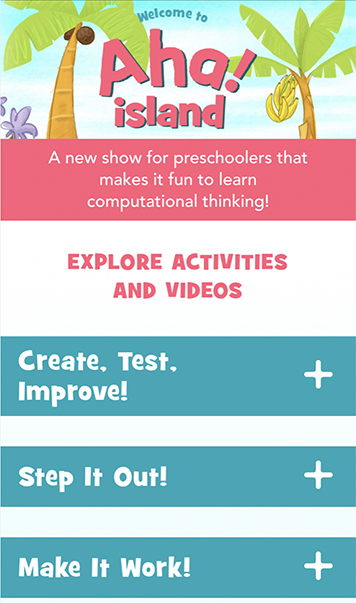
During this iterative development process, we solicited feedback from our content director, an expert in the field of preschool CT, as well as our advisors, who represent a broad range of fields, including CT, preschool science and math curricula, literacy, and early childhood development. Their feedback informed several rounds of revisions for the text and the visuals of the curricular resources, and ensured that what was being written and animated was matching the learning goals.
For example, to illustrate the CT core idea of the debugging process, we created “Going Bananas With Lemonade,” a seven-minute animated story in which the characters create a batch of lemonade, discover it is too sour, and then “debug” their lemonade by reflecting on the steps they took (squeezing lemons and adding water), thinking about what they might do differently (adding sugar), and then trying it out and tracking their results (they receive a thumbs-up in a taste test by a neighbor). The two-minute animated song “Check Your Steps” reinforces the debugging concepts introduced in the animated story by highlighting in the context of getting dressed the importance of the first step of the debugging process. “Playing Around With Paint” is a live-action video that shows two real children debugging the steps needed to create just the right shade of paint for their cardboard playhouse. And the hands-on activity “Take Me to the Fair” offers parents and children the opportunity to put the debugging skills they have seen in the videos into practice, by building a ramp just steep enough that a toy car will roll down and hit a target. Prompts for parents encourage them to have their children take the lead in setting up the ramp, and then ask them how they might “check our steps” to find out why the car did not hit the target. All of these resources are aligned to the debugging process learning goals (Table 1).
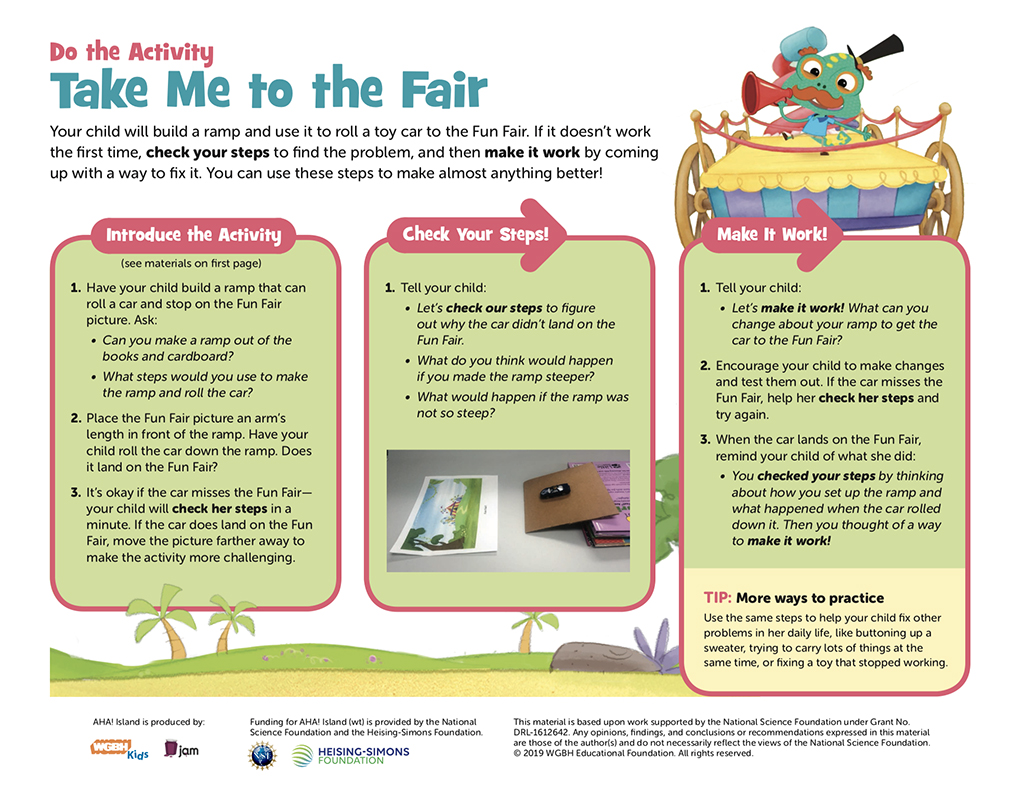
In testing with preschool-aged children and their parents, we found that children were often able to describe the main goals or problems that characters were trying to solve. Further, many children were also observed describing the target CT core ideas and explaining how they were promoted in the media. For example, in one of our formative studies, children were shown videos and did hands-on activities related to algorithmic thinking with their parents. When asked to describe what the video was about, half of the children said the characters were singing about how to “step it out.” When doing the related hands-on activity, almost all parents used the “step it out” catchphrase during discussions with their children. Our final impact study provided evidence that children extended the use of these catchphrases into their everyday lives. For example, one parent said of her child, “He was getting ready to go outside. He was unable to put his jacket on. Then he looked closely and said, ‘Oh, it’s inside out.’ He then turned the sleeves the right way and was able to put it on. He then looked at me and said, ‘I stepped it out.’” These types of observations provided evidence that the content was successful in promoting the specified learning goals.
Feedback during formative testing also revealed some areas for improvements. Although many children were able to understand the problem-solving techniques used for each of the CT core ideas, others focused their descriptions of the videos on narrative aspects of the story. As a result of this research, we simplified the storylines of our animated stories so that children could better focus on the CT core ideas. We also reduced the text in our hands-on activities and looked for ways to incorporate CT into activities that were part of their daily routines to reduce the difficulty of at-home implementation. Finally, we expanded the use of CT catchphrases to all of our resources, not just animated videos, to provide an easily understandable way to refer to CT strategies that preschoolers can use to solve problems.
At the end of our iterative development process, our collection of curricular resources included nine animated stories, nine animated songs, three live-action videos, and 15 hands-on activities. These curricular resources promote algorithmic thinking, the debugging process, and the design process, along with suggestions for how these ideas could be used over an extended period of time. Once the resources were developed, we conducted an impact study to investigate the ways in which they supported the coexploration of CT by children and their families; results suggest that parents are seeing the influence of AHA! Island as children infuse aspects of a CT approach into their everyday behaviors (Lavigne et al. 2020).
Conclusion
We believe the creation and use of a learning blueprint can provide unique benefits in the development of curricular resources for families and educators. Specifically, a learning blueprint ensures that the curricular objectives are specific and articulated so that all members of the research and development team are in agreement about learning goals before beginning any development work. Further, the learning blueprint can serve as an anchor when different teams of individuals are working on different kinds of content (for example, videos, hands-on activities, and learning assessments). Equally critical, the use of a learning blueprint can ensure that the learning resources created cover all of the target learning goals for the curriculum.
Despite the significant ground that has been covered by the current work to articulate a set of developmentally appropriate CT learning goals for young children, there is still much to do. Although our current learning blueprint is focused on the CT core ideas of sequencing and algorithmic thinking, the debugging process, and the design process, additional work is necessary to build out the other CT core ideas to encourage the acquisition of a comprehensive toolkit of CT skills in young children. Additional research is also needed to understand what underlying cognitive, verbal, and social capabilities are pre-requisites for children to engage in a CT-oriented approach to problem-solving. Finally, longitudinal research could help the field understand how the acquisition of certain CT skills early in life may support children’s ability in the later grades to engage in CT, computer science, and coding.
Heather Lavigne (HLavigne@edc.org) is a research scientist at the Center for Children and Technology at Education Development Center in New York, New York. Ashley Lewis Presser (ALewis@edc.org) is a research scientist at the Center for Children and Technology at Education Development Center in New York, New York. Deborah Rosenfeld (DRosenfeld@edc.org) is a senior research associate at the Center for Children and Technology at Education Development Center in New York, New York. Marisa Wolsky (marisa_wolsky@wgbh.org) is an executive producer in the Children’s Media Department at WGBH Educational Foundation. Jessica Andrews (Jessica_Andrews@wgbh.org) is a project director in the Children’s Media Department at WGBH Educational Foundation.
Acknowledgments
This material is based upon work supported by the National Science Foundation (NSF) under Grant No. DRL-1612642. Its contents are solely the responsibility of the authors and do not necessarily represent the official views of NSF. The research and development on the described project was conducted through a partnership between WGBH Educational Foundation and Education Development Center EDC. We extend our heartfelt gratitude to our project advisors, collaborators, and especially our preschool partners: early childhood education centers, parents, and children.
Early Childhood Informal Education


